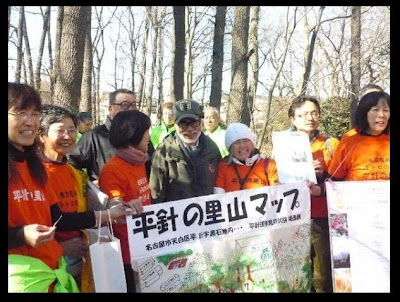Sakerock: Pleasure Trip & Nihon no Hito
If you like indies music, pop music mixed with jazz and other beats, do check Sakerock out. They play instrumental tracks - with Hamano Kenta on trombone as the driving force. The drummer is terrific. And it just so happens that they come from Hanno City, Saitama. They also do Japanese folk music and they are heavy on "cool" if that word is even used these days, but their suits and hats are a give a way. They like "cool" and they like graphic design (as noted by Ian Lynam over at Neojaponisme, writing about graphic designer Ohara Daijiro , who does the lettering for their albums and videos). Hoshino Gen (guitar) was born in 1981 and got his first taste of fame in the 69 film (2004, Director: Sang-il Lee) based on Murakami Ryu's novel about a high school in turmoil in Sasebo, Kyushu back in 1969, as students were protesting all over the world. Hamano Kenta (trombone) was born on August 5, 1981. Watch him in the drama Honey and Clover . Free schools of course have...



